The Reynard-Scotts were the smartest of our Victorian great great grandparents. The Reynards were one of the first couples I wrote about intrigued by stories of a spice loaf and a wig so it seems apt for the Scotts to be one of the last, bookending tales of mining, farms and grinding poverty with two stories of the Victorian middle-class.
Elizabeth Webster & Charles Scott are my 3xgreat grandparents, Grandma’s mother’s father’s parents and for this tale we are moving into what is now North Yorkshire, to the village of Minksip just south of Boroughbridge.
Last year, for my birthday, Mum took me to the Wild Swan pub for dinner. It’s one of her favourite “local” pubs, local being defined as anything within a twenty-mile radius so long as it’s not in a town. The food and the company were wonderful and the trip had the added benefit of being able to wander down the village high street trying to work out exactly which home had belonged to Elizabeth & Charles.
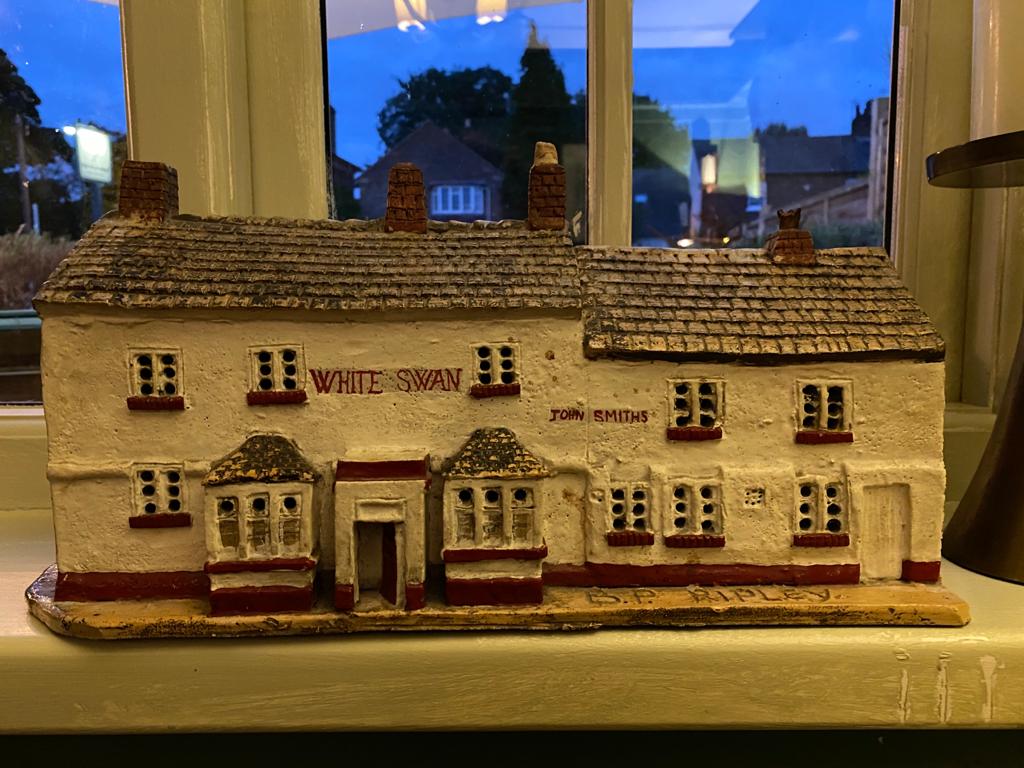
Minskip is one of those immaculate North Yorkshire villages with solid brick-built houses and well-tended gardens strung along a main road. The location is key to that well-heeled vibe. Harrogate, York and even Leeds are all within reasonable commuting distance for those with a car. Without a car, you are much more limited. I did discover the existence of a once daily bus which would take me from Mum’s direct to Minskip but none which would bring me back!
Minskip’s location was just as important to its economic prosperity in the early to mid-1800s for the Great North Road ran close by and stagecoaches were in their heyday. The White Swan coaching inn opened for business in 1832 bringing an increased number of travellers (and their coins) to the village. This wasn’t to last as within three decades trains had decimated the stagecoach trade, but by then the Scott family were already established.
Elizabeth Webster was born the same year as the pub was opened in the village of Kirby Hill, about three miles north of Minskip, just the other side of Boroughbridge. She was the daughter of Ann (Williamson) & John Webster, a cordwainer. Elizabeth’s exact birth date was unknown, but she was baptised at All Saints church, in Kirby Hill on 6 May 1832 and a birth date in mid-April would fit with most documentation.
Charles Scott was born in Boroughbridge a couple of years later, the second child of Jane (Drury) and Thomas Scott. Jane is another of those wives hidden by lack of records and propensity for the widowers in my family to choose a second wife with the same name as the first. For a long time, I thought Charles’s mother had died in 1872 until another person’s research alerted me to the death of a Jane Scott on 18 June 1838. As is also the way with the widowers in my family, Thomas didn’t hang around, remarrying the following year, to a woman named Jane Kendrew……
Like John Webster, Thomas Scott was also cordwainer. I imagine a mini guild of cordwainers in Boroughbridge, a rural remnant of The Company of Cordwainers of the City of York which had been disbanded in 1808. In addition to the Websters & Scotts there was also the Barker family of Dishforth. Dishforth is another small village in the vicinity of Boroughbridge, now mainly associated with the airfield. It also happened to be where Thomas Scott had been born and where he sent his son Charles to be apprenticed to one Francis Barker. The heads of all three households were small business owners and likely met regularly over a pint of ale to critique the latest shoe fashions, complain about the price of leather, and even share business opportunities during peak periods. Like any good fraternity, I expect they also drawn to each other at larger social gatherings such as the Barnaby horse fair bringing their families with them, meaning Elizabeth & Charles would likely have known each other as children.
So it was, on 3 May 1856 that the Webster and Scott families were united in marriage. By this time Charles had completed his apprenticeship and Elizabeth was earning her own money as a dressmaker giving them the means to set up home together. More pertinently, Elizabeth was in the early stages of pregnancy….
Thomas Scott had left the area by this point and was living with a nephew, John (son of his brother William), close to Bradford. This explains the birthplace of Mary, Elizabeth & Charles’s first child, although it is not clear whether this was a short family visit, the place where the couple first set up home together, or a deliberate attempt to disguise a child conceived out of wedlock by moving out of the local area. Scott is simply too common a surname for me to be able to follow this up.
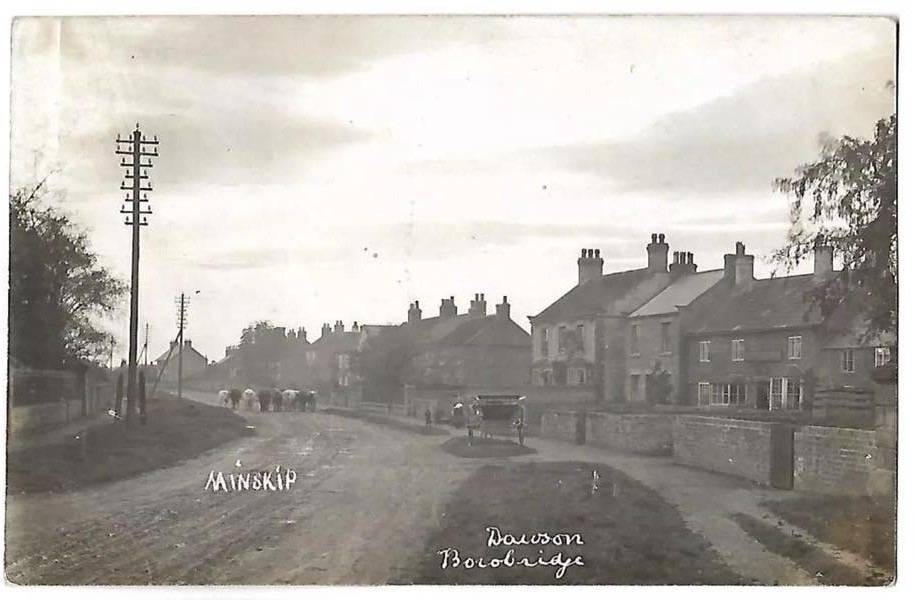
By the end of 1860 (before the birth of their second child, Arthur), Elizabeth & Charles had moved to Minskip where they were to spend the remainder of their lives. Charles’s occupation was given as a cordwainer in both the 1861 & 1871 censuses. More unusually, Elizabeth continued to have her occupation listed too, as a dressmaker in 1861 and a milliner in 1871. These complimentary trades could have helped the Scotts attract a more fashionable elite. Certainly, their third child, John (my great, great grandfather) cut a fashionable air in his youth.
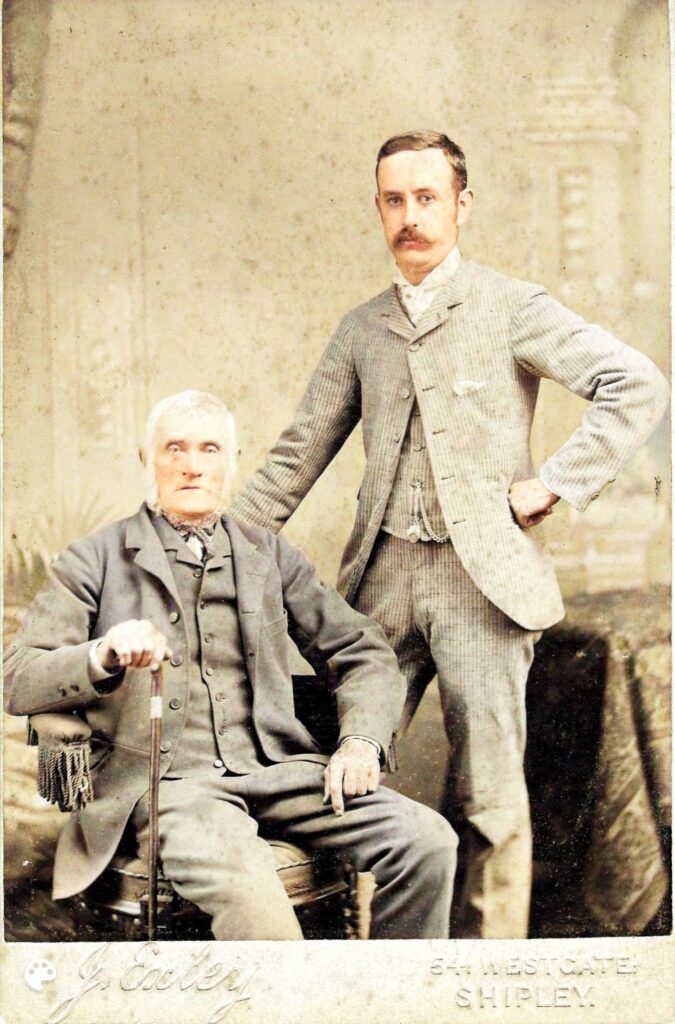
Elizabeth & Charles had two more children, Alfred Herbert & Annie. Mary married a farm labourer, Joseph Dobson and moved to Easingwold. Arthur trained as a joiner, before eventually becoming a farmer and milk dealer in Menston. John, trained as a bricklayer, and then worked as a grocer before moving into farming in Topcliffe, eventually putting those bricklaying skills to good use by building his own home there. Alfred, trained as a joiner and ended up in Harrogate. Annie did not marry, but became a butter factor in her own right, leaving an estate worth £188 when she died in 1903, a decent sum for a single woman.
What the children’s occupations tell me is that this is a family who understood the value of being skilled in a trade and were also astute at business, knowing when to switch to alternative ways of making money. In this they were following their father’s example. By 1881, Charles had switched career to become a fruiterer. Later that decade he also became a landlord. At a major property sale in 1889 he “secured two cottages, with outbuildings and gardens, occupied by Mrs Taylor, for £160,” a major outlay for the time.
But not everything was as rosy as business, for at some point in the mid-1880s, Elizabeth became a “hemiplegic.” Whilst most commonly caused by a stroke, it can also be the result of some other brain trauma, an accident or a tumour. This would have been devastating for an intelligent, active woman such as Elizabeth. For the next seventeen years, until she died from heart failure on 28 June 1903, Elizabeth would have been reliant on others. I’m guessing this was when Charles invested in a horse & some sort of carriage, adding carrier to his portfolio career. Her granddaughters (Mary’s children) took on the domestic work.
Still, paralysed as she was, Elizabeth outlasted her husband by six years. For, like his son and two grandsons after him, Charles fell afoul of a random tragic accident.
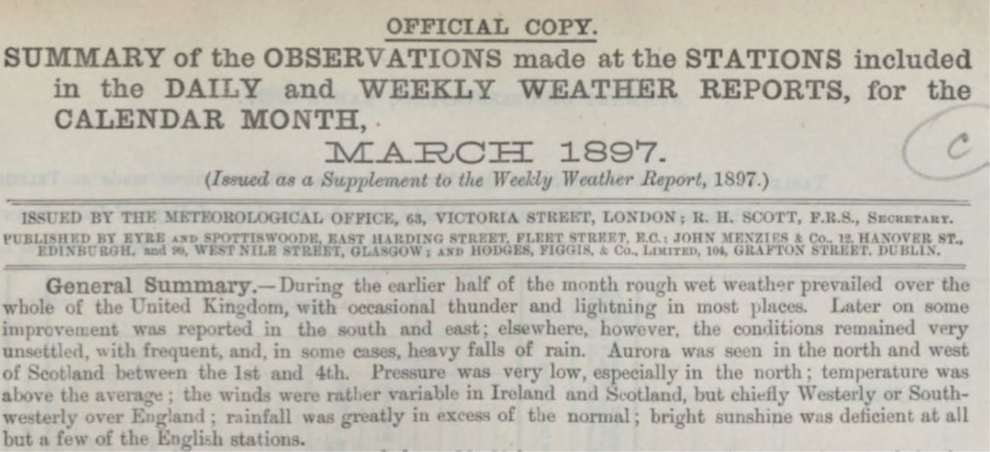
On the 24 March 1897, yet another spring storm hit northern England. The met office report for the month focused rather more on the south of England and on Scotland, but did note that “elsewhere, however, the conditions remained very unsettled, with frequent, and in some cases heavy falls of rain.” Local newspapers help to provide a better picture of the day’s weather. Whilst the Knaresborough Post chose to focus on a local football match writing that “This match took place at Ashville in very stormy weather. Trinity, who won the toss, elected in the teeth of a perfect gale,” the Hull Daily News took a wider view reporting on the overturning of a tramcar in Bradford (no serious injuries), and the loss of at least one member of a dredger crew off the west coast. This was serious weather.
Charles and his daughter Annie braved the storm. Wednesday was and still is market day in Knaresborough. There were goods to transport and butter to be sold. Charles Mackintosh had long since patented his waterproof raincoat providing protection from the rain if not the cold on the six-mile journey into town. However, the market was uncovered and by the end of the morning the pair would have been chilled to the bone. I really hope they had chosen to partake of a cooked dinner before they set off home in the early afternoon.
There again, it would have been better if they hadn’t, for just as they were passing Mrs Collins’ house on the high street, a tile flew from the roof and struck Charles on the head, “scattering his brains” (to quote The Knaresborough Post, in its rather graphic description of events). Charles was killed immediately, a death subsequently found to be accidental, but I can imagine Mrs Collins was careful to keep her roof properly maintained from then on. I cannot begin to imagine the impact on Annie.
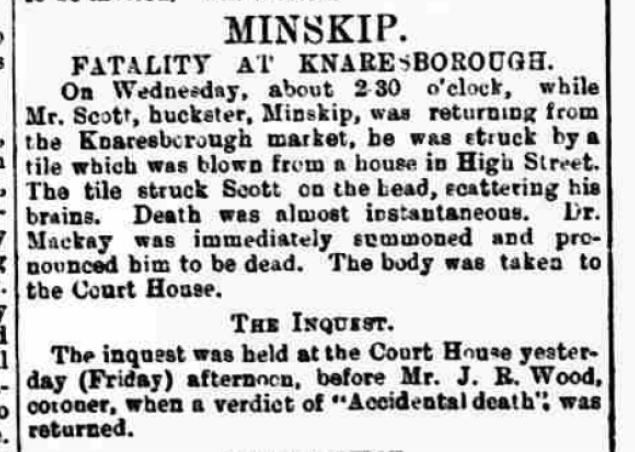
It’s rather a sad and abrupt end to this tale, so let us finish back in the White or Wild Swan with a toast the couple who rode the Victorian wave of prosperity and, of all my 3xg grandparents most effectively set their five children up to continue that journey. RIP Elizabeth & Charles.
